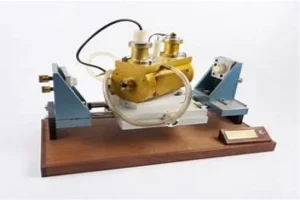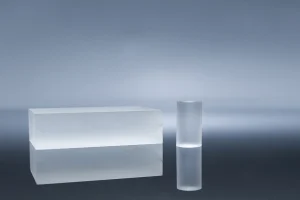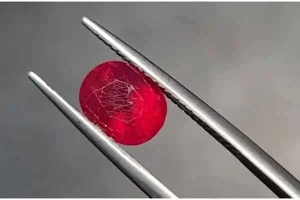Understanding the Mid-Infrared Spectrum
The mid-infrared (mid-IR) region spans wavelengths from 2 to 8 μm and offers a plethora of opportunities across various domains. With the recent advancements in laser technology, solid-state lasers that operate in this spectrum are experiencing a meteoric rise in applications
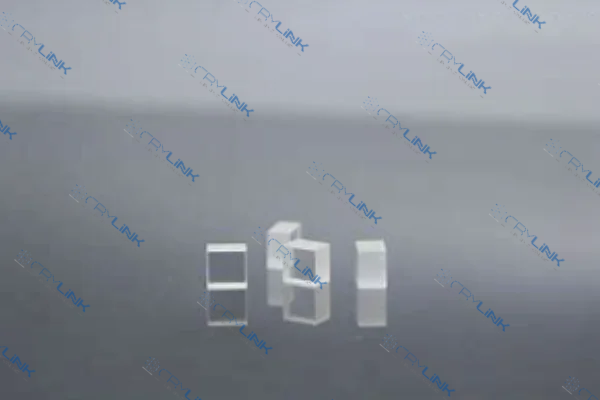
The Powerhouse Crystals: Cr:ZnS and Cr:ZnSe
When we delve into the world of mid-infrared lasers, two crystals emerge as paramount influencers in the domain: Cr:ZnS and Cr:ZnSe. These aren’t just ordinary crystals; they are at the vanguard of technology, setting new benchmarks in laser capabilities.
Their importance predominantly stems from their unique characteristics. The very essence of a laser’s functionality is its tunability, especially when precise adjustments in wavelength are paramount. Both Cr:ZnS and Cr:ZnSe shine in this aspect, offering broad mid-infrared tuning that is virtually unmatched. This inherent feature ensures that applications, whether they be in medical imaging, defense, or environmental monitoring, can be catered to with remarkable specificity.
But what does broad tuning really mean? At its core, it represents versatility. In a rapidly evolving world where technological needs change by the day, the ability of a laser to adapt becomes indispensable. Cr:ZnS and Cr:ZnSe’s ability to span a wide mid-infrared spectrum ensures that they remain relevant across a multitude of applications, from those we utilize today to the innovations of tomorrow.
The intrinsic properties of these crystals go beyond just broad tuning. Their efficiency, robustness, and longevity make them a preferred choice for high-end applications. Additionally, their compatibility with contemporary laser systems ensures seamless integration, making them not just powerful but also practical.
In the grand tapestry of laser technology, it’s crystals like Cr:ZnS and Cr:ZnSe that act as the threads holding everything together. Their unparalleled ability to offer a wide tunable range in the mid-IR spectrum ensures they remain at the forefront, helping lasers meet the exacting demands of today’s innovative applications.

The Rise of Mid-Infrared Lasers in Gas Sensing
The realm of gas sensing, once dominated by traditional methods, has undergone a transformative shift with the inception of mid-infrared lasers. What makes these lasers truly stand apart is their unmatched prowess in detecting trace gases. Even at concentrations so minute that they were previously undetectable, mid-infrared lasers can discern their presence. As the world marches towards more sustainable practices, the monitoring of gases, whether they be pollutants or rare compounds, becomes paramount. These lasers, with their cutting-edge capabilities, are now the bedrock of numerous industries and environmental conservation efforts.
The industrial landscape, particularly sectors like petrochemicals, agriculture, and pharmaceuticals, often require precise gas measurements. Traditional methods might falter, especially when it comes to detecting rare gases or those in extremely diluted forms. However, mid-infrared lasers, with their razor-sharp precision, have filled this gap, proving to be a game-changer. They not only enable detection but also facilitate real-time monitoring, a boon for industries aiming for safety, efficiency, and compliance with environmental norms.
But it’s not just about detection. The magic of these lasers lies in their unparalleled precision and sensitivity. Gases, by nature, have distinct molecular vibrations. Mid-infrared lasers are adept at targeting these unique vibrations, ensuring that each gas is identified based on its unique signature. Think of it as a fingerprint scanner, but for gases. This level of precision is pivotal as it eradicates the possibility of erroneous readings or misidentification.
In an age where accuracy is non-negotiable, especially when the stakes involve environmental well-being or industrial safety, the need for faultless gas detection tools is more pressing than ever. It’s here that mid-infrared lasers are truly making their mark, promising a future where gas sensing is not just accurate but also proactive, helping industries and societies make informed decisions.
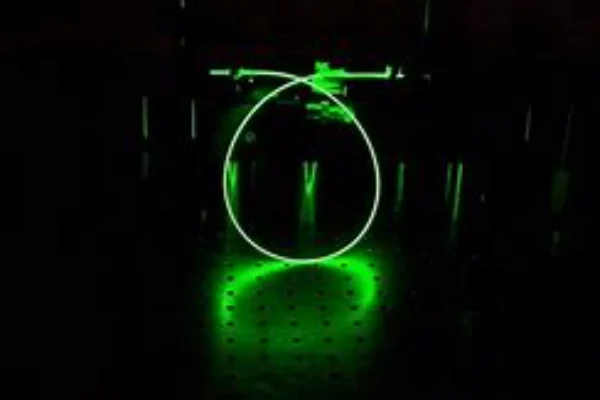
Environmental Monitoring: A New Era
The shift in environmental monitoring methodologies is palpable. No longer are we solely reliant on traditional techniques, many of which offered data but lacked the immediacy and precision required for today’s environmental challenges. Enter mid-infrared lasers, technological marvels that are redrawing the boundaries of what’s possible in environmental science. Their innate sensitivity allows for the detection of even the minutest traces of pollutants and environmental hazards. Whether it’s airborne contaminants, waterborne pathogens, or subtle changes in atmospheric compositions, these lasers detect them with a degree of accuracy that was previously unthinkable.
The role of mid-infrared lasers isn’t merely confined to detection. They offer a holistic solution, combining detection with analysis, ensuring that environmental researchers and scientists are equipped with comprehensive data. For instance, in urban settings where air quality fluctuates owing to vehicular emissions, industrial activities, and other factors, these lasers can pinpoint not just the presence of pollutants but also their sources and concentrations. This granularity of data is pivotal for policy-makers and city planners, aiding them in formulating informed strategies for sustainable urban living.
The true brilliance of mid-IR lasers in environmental monitoring becomes evident in their capacity for real-time analysis. The environment is dynamic, with changes occurring at a rapid pace. In such a scenario, data that is even a few hours old can be rendered obsolete. Real-time feedback provided by these lasers ensures that we are always a step ahead, ready to detect and respond to any environmental anomaly instantaneously. For instance, in the event of a chemical spill or an unexpected release of greenhouse gases, real-time data can guide immediate interventions, minimizing damage and ensuring that corrective measures are employed without delay.
In the larger picture, these lasers are not just tools; they are guardians of our environment. Their role is pivotal in ensuring that as we march towards progress, we do so in harmony with nature, ensuring that the delicate balance of our ecosystem remains undisturbed. With the capabilities of mid-infrared lasers by our side, the future of environmental monitoring seems not just promising but also equipped to handle the multifaceted challenges of the modern world.
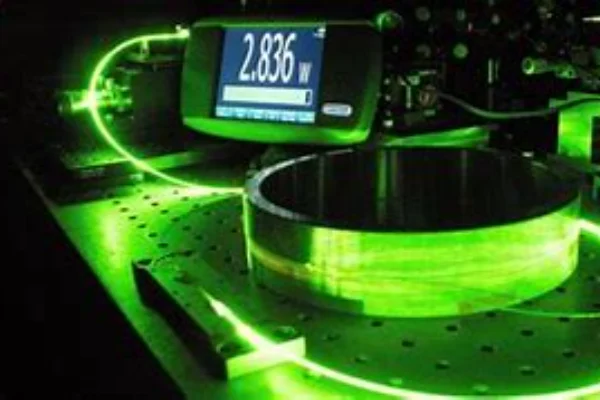
Military Countermeasures: The Mid-IR Advantage
The intersection of technology and defense is one that constantly evolves, driven by the relentless quest for security, precision, and superiority. Historically, the military has harnessed everything from rudimentary tools to sophisticated machinery to maintain an edge. Today, one of the groundbreaking additions to this arsenal is the mid-infrared laser. Its array of applications is reshaping military strategies, offering avenues to safeguard personnel and assets while countering potential threats with unprecedented efficiency.
In the vast spectrum of military technologies, the importance of detection and counteraction cannot be overstated. Potential threats, whether airborne or terrestrial, need to be identified and dealt with swiftly. Mid-infrared lasers, with their broad tunability, are redefining these very paradigms. Their capability to be optimized across a spectrum means they can be adapted for various defense scenarios. Be it the early detection of airborne threats like missiles, drones, or aircraft or the identification of hazardous substances on the ground, these lasers provide a comprehensive solution.
But it’s not just about identification. The modern battlefield requires tools that can act as both detectors and neutralizers. Mid-IR lasers, with their precision, can be used to thwart potential threats, thereby serving dual purposes. For instance, their energy can be directed to interfere with the electronics of an incoming missile, rendering it inert, or to disrupt communication lines of an adversary, ensuring tactical advantage.
In the heat of a military operation, every alert, every signal counts. False alarms, historically, have led to undesired consequences, sometimes escalating situations or redirecting valuable resources. This is where the precision of mid-infrared lasers becomes invaluable. Their capability to differentiate between genuine threats and benign entities ensures that the rate of false alarms is drastically reduced. For commanders on the ground or naval officers at sea, this precision translates to more accurate decision-making, ensuring that actions taken are based on reliable data.
In conclusion, the integration of mid-infrared lasers in defense strategies isn’t just a testament to technological advancement but a nod to the future of warfare. A future where decisions are data-driven, threats are neutralized with surgical precision, and where the safety of personnel is prioritized through the meticulous harnessing of cutting-edge tools. The mid-IR advantage, as it seems, is set to be a cornerstone of military prowess in the years to come.
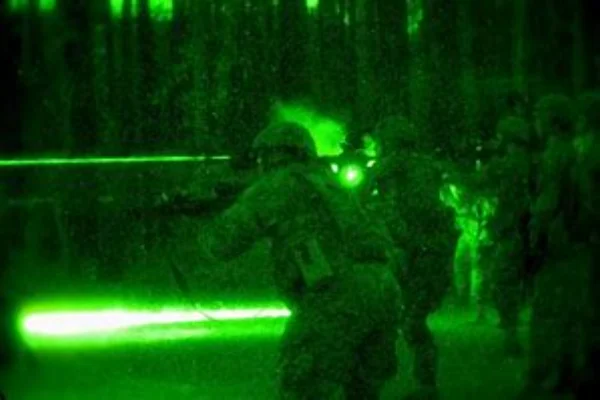
Conclusion
Mid-infrared solid-state lasers, especially with the aid of crystals like Cr:ZnS and Cr:ZnSe, are shaping the future across diverse sectors. From enhancing environmental monitoring to revolutionizing military countermeasures, their impact is profound and undeniable. As we continue to unlock their potential, it’s evident that the horizons of what we can achieve with these lasers are expanding exponentially.
FAQs
1. What is the wavelength range of the mid-infrared spectrum?
The mid-infrared region spans wavelengths from 2 to 8 μm.
2. Why are Cr:ZnS and Cr:ZnSe crystals crucial for mid-IR lasers?
Cr:ZnS and Cr:ZnSe offer broad mid-infrared tuning, enabling the lasers to be adjusted for specific applications.
3. How do mid-infrared lasers enhance gas sensing?
Mid-IR lasers can target specific molecular vibrations, ensuring accurate gas detection with high selectivity and sensitivity.
4. Can mid-IR lasers provide real-time feedback in environmental monitoring?
Yes, mid-IR lasers have the capability to provide real-time feedback, aiding in swift interventions.
5. How are mid-infrared lasers changing military operations?
Mid-IR lasers can be optimized for various military applications, enhancing targeting, defense, and reducing false alarms.


